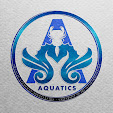Bermuda triangle, also known as the Devil’s Triangle, happens to be one of the most mysterious places on this planet. Located off the Southeastern coast of the US in the Atlantic Ocean, between Bermuda, Florida and Puerto Rico, the region has become the Centre of unresolved mysteries. Tales of lost mariners and disappeared ships, crashed aircraft and even vanishing humans, have been emerging from the waters of the Bermuda Triangle for centuries. The vast area of more than half a million square miles (Some writers gave different boundaries and vertices to the triangle, with the total area varying from 1,300,000 to 3,900,000 km2 ) is also known as the Devil’s Triangle, and theories as to why so many travelers fall foul of its clutches abound. Some say there are magnetic anomalies that throw compasses off course, others that tropical cyclones are to blame, and some say there’s simply no mystery at all! This has led to the production of vast amounts of material on topics such as the Bermuda Triangle. Accordingly, they have claimed that the market is biased in favor of books, TV specials, and other media that support the Triangle mystery.
A large number of aircraft and ships are said to have
disappeared under mysterious circumstances. Most reputable sources dismiss the
idea that there is any mystery. The legend of the Bermuda Triangle is a
manufactured mystery, continued by writers who either purposely or unknowingly
made use of misconceptions and faulty reasoning. Most people said lots of
concepts according to incidents. Large number of ships and aircraft reported
missing in the area than in any other part of the ocean. And there are list of
incidents in Bermuda triangle given below link. https://en.wikipedia.org/wiki/List_of_Bermuda_Triangle_incidents
There are many hypothetical explanation attempts to explain
those incidents.
·
Paranormal explanations: Triangle writers have
used a number of supernatural concepts to explain the events. One explanation
pins the blame on leftover technology from the mythical lost continent of
Atlantis. Sometimes connected to the Atlantis story is the submerged rock
formation known as the Bimini Road off the island of Bimini in the Bahamas,
which is in the Triangle by some definitions.
·
Natural explanations:
1.
Compass problems are one of the cited phrases in
many Triangle incidents. While some have theorized that unusual local magnetic
anomalies may exist in the area, such anomalies have not been found.
2.
The Gulf Stream is a major surface current,
primarily driven by thermohaline circulation that originates in the Gulf of
Mexico and then flows through the Straits of Florida into the North Atlantic.
In essence, it is a river within an ocean, and, like a river, it can and does
carry floating objects. It has a maximum surface velocity of about 2 m/s (6.6
ft/s). A small plane making a water landing or a boat having engine trouble can
be carried away from its reported position by the current.
3.
Hurricanes are powerful storms that form in
tropical waters and have historically cost thousands of lives and caused
billions of dollars in damage. These storms have in the past caused a number of
incidents related to the Triangle.
4.
An explanation for some of the disappearances
has focused on the presence of large fields of methane hydrates (a form of
natural gas) on the continental shelves. Laboratory experiments carried out in
Australia have proven that bubbles can, indeed, sink a scale model ship by
decreasing the density of the water.
As
the accidents, often mysterious, continue to happen in the Bermuda Triangle
region, many have offered a number of explanations for the mystery behind them.
The role of paranormal activities and the presence of aliens have been strongly
suggested by those who believe something odd is happening, while many with
scientific view disputed this argument offering rational explanations to the
phenomenon. Among the few proposed scientific explanation, the more popular is
the theory of electromagnetic interference that causes compass problems. This
theory claims that there is a very high pull of the earth’s natural magnet
which redirects the compass and other sophisticated equipment, and disallows
them to take their intended route through the waters. However, as no single
theory could offer a concrete explanation, many still believe there is nothing
strange with the region as most of the incidents were inaccurately reported or
fictionalized versions of the accidents.
Written by: Malithi Hansika Palliyaguru
References:
- https://oceanservice.noaa.gov/facts/bermudatri.html
- https://www.britannica.com/place/Bermuda-Triangle

























